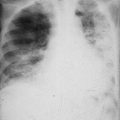and Karl Reinhard Aigner3
(1)
Department of Surgery, The University of Sydney, Mosman, NSW, Australia
(2)
The Royal Prince Alfred and Sydney Hospitals, Mosman, NSW, Australia
(3)
Department of Surgical Oncology, Medias Clinic Surgical Oncology, Burghausen, Germany
In this chapter you will learn about:
Lump, ulcer, bleeding and evidence of blood loss and lymph node enlargement
Other swellings
Findings of general examination including examination of the mouth, throat, abdomen, rectum and anus
Rare and seemingly unrelated indications of cancer
Physical signs of cancer include local lumps or other abnormal swellings; ulcers; tender or painful areas; evidence of blood loss from bowel, urine, uterus etc.; and general effects on the patient such as weight loss, pallor, and general unwell appearance. There may also be evidence of cancer spread to other organs or tissues (metastases). Different cancers tend to spread in a usually predictable way to different organs or tissues, but no matter what signs are present, the only proof of cancer depends on a biopsy demonstrating the presence of malignant cells.
5.1 Lump
It is important to recognise features of lumps that are most likely to be associated with cancer in general and particular forms of cancer. For example, cancer lumps are usually harder than lumps from other causes. Cancer lumps usually are not cystic (although on occasions they may be), and they are usually not tender unless quite advanced. As they enlarge, cancer lumps adhere to and invade nearby structures and therefore become less mobile.
Cancer lumps are usually not tender unless quite advanced.
5.2 Ulcer
Malignant ulcers often have raised or heaped up edges. They tend to grow into nearby tissues on which they lie and there is usually surrounding swelling and induration. They may bleed easily but usually not profusely. They may or may not be tender. Ulcers due to skin cancer are usually not tender, whereas malignant ulcers in the mouth and throat usually become quite tender in the later stages.
5.3 Bleeding and Evidence of Blood Loss
There may be obvious blood loss or hidden (occult) blood loss with evidence of anaemia due to chronic blood loss. Blood in the faeces may be detected chemically even when it is not obvious to the naked eye, and this may be an early feature of cancer of the stomach or bowel. In fact occult blood loss is often used as a screening test for people with a high risk of developing gastric or bowel cancer even though they may have no symptoms.
Stay updated, free articles. Join our Telegram channel

Full access? Get Clinical Tree







